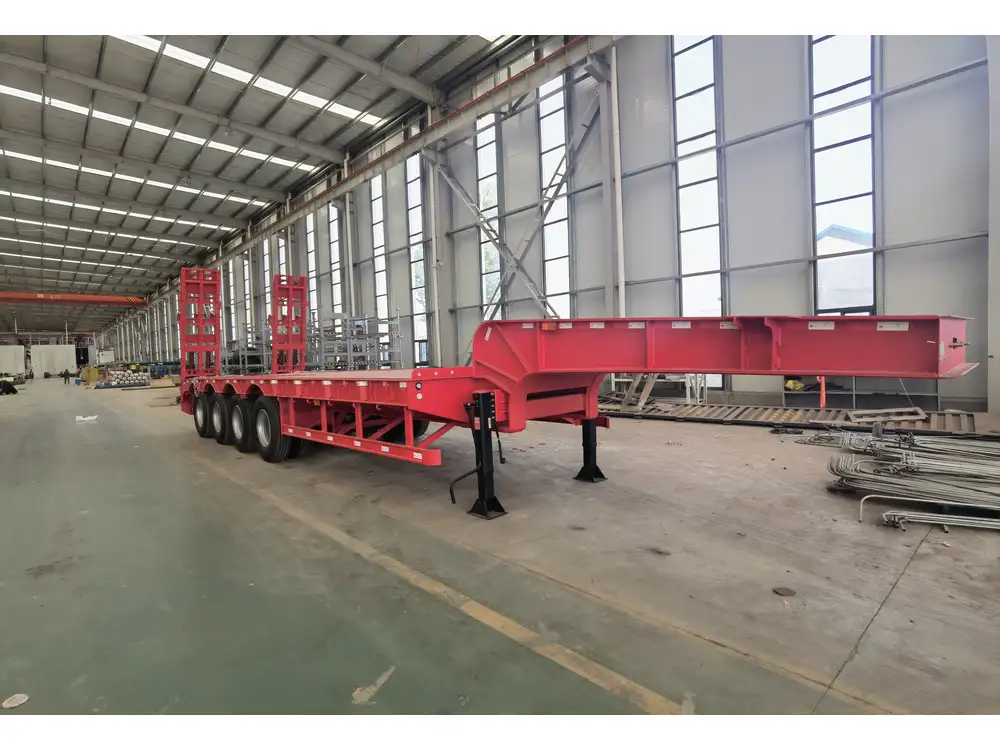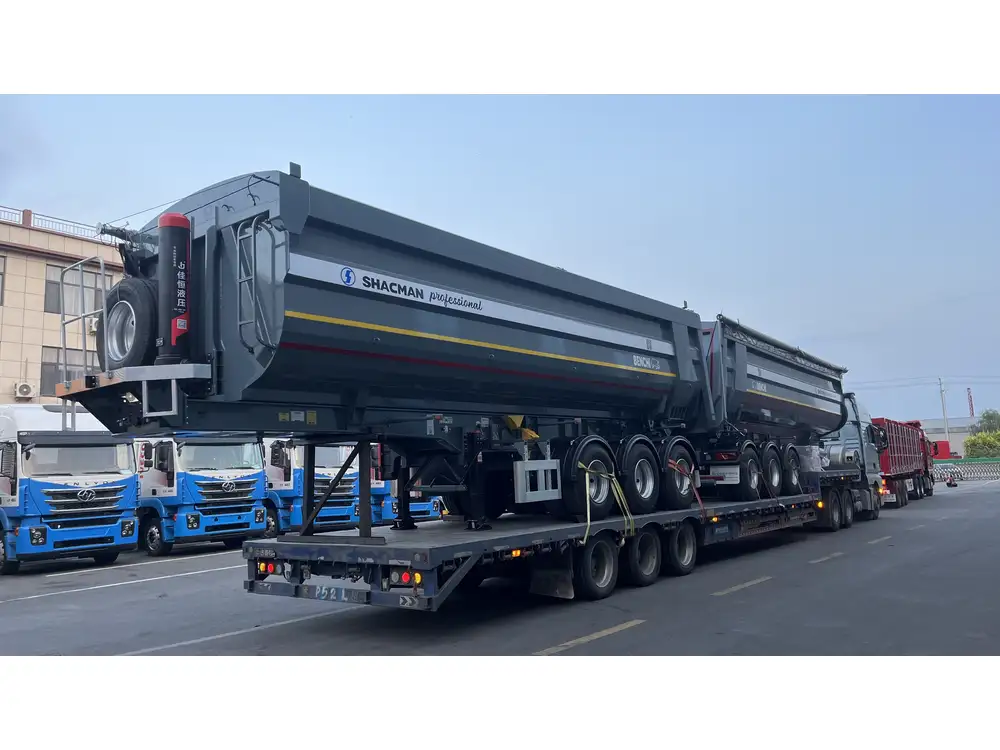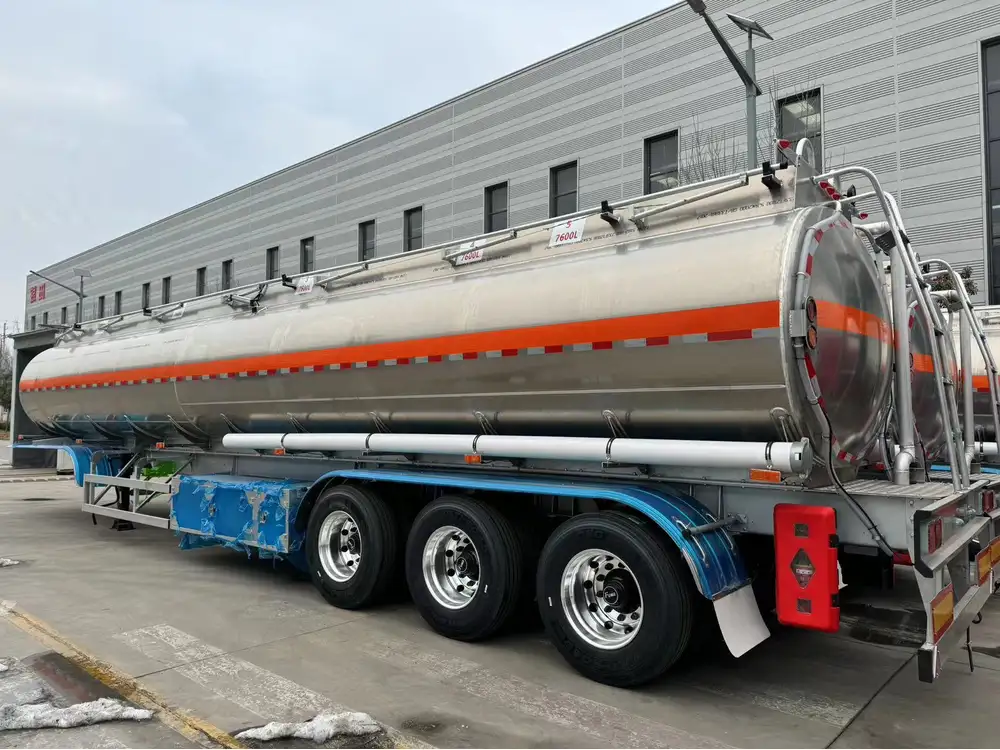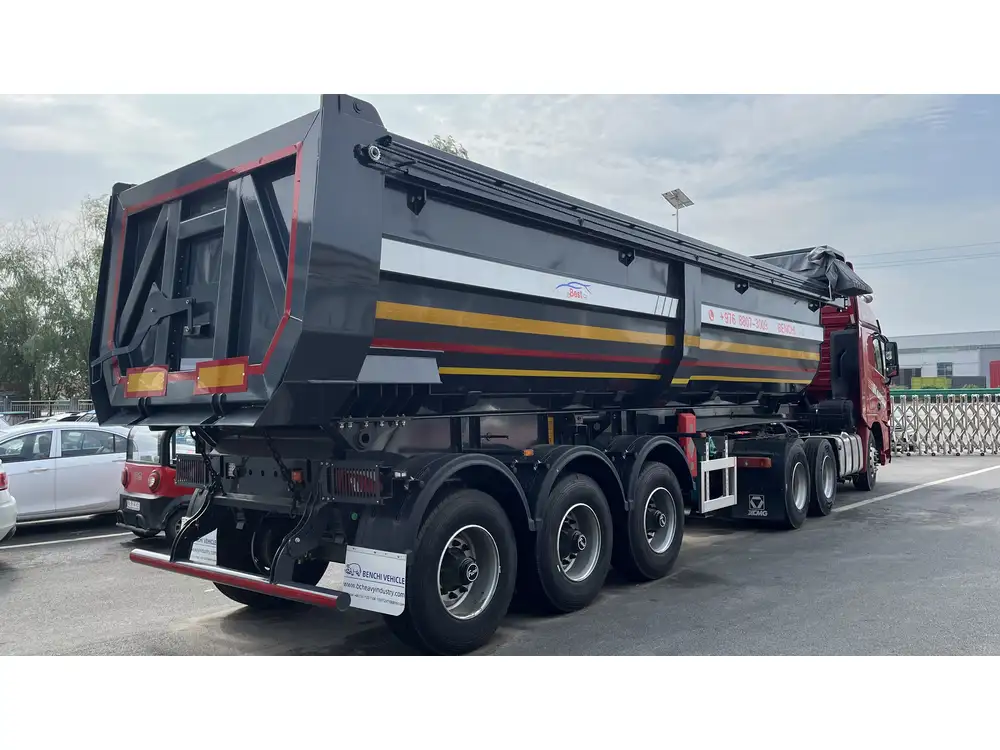Flatbed trailers are indispensable in the transportation industry, known for their versatility and capacity to carry diverse loads. However, potential buyers often find themselves asking, “How much does a flatbed trailer cost?” In this article, we delve into various facets that determine the pricing of flatbed trailers, breaking down the complexity of trailer costs while providing insights to help you make an informed purchase.
Factors Influencing Flatbed Trailer Pricing
When determining the cost of a flatbed trailer, several key factors come into play:
| Factor | Description | Impact on Cost |
|---|---|---|
| Type of Flatbed Trailer | There are various types including standard flatbeds, drop deck, and extendable trailers. | Varies widely; specialized models generally cost more. |
| Material Construction | Trailers can be made from steel, aluminum, or a combination. Each material has its pros and cons affecting durability and weight. | Aluminum trailers tend to be pricier but offer better fuel efficiency due to less weight. |
| Size and Capacity | Flatbeds range in size (e.g., 20 to 53 feet) and weight capacity, impacting their pricing. | Larger capacity and size increase the cost significantly. |
| Brand and Model | Established brands often come with higher price tags due to perceived reliability. | Brand reputation can add 10-30% to the cost. |
| Custom Features | Add-ons like toolboxes, extra tie-down points, and hydraulic features influence pricing. | Customization can increase the price by 15-50%. |
| Condition (New vs. Used) | New trailers come with warranties and latest features, while used trailers may offer significant savings. | A new flatbed trailer can cost anywhere from $10,000 to $50,000, while used ones range from $5,000 to $30,000. |
| Region and Local Market | Prices vary based on geographic location due to demand and availability. | Cost can fluctuate by as much as 20% based on location. |
Breakdown of Price Ranges
Standard Flatbed Trailers
- Price Range: $10,000 – $30,000
- Overview: Generally made of steel, these trailers are popular for standard freight transport, including machinery and heavy equipment.
Aluminum Flatbed Trailers
- Price Range: $15,000 – $50,000
- Overview: Beneficial for weight-sensitive loads, aluminum flatbeds reduce fuel costs and are rust-resistant, though they require a higher initial investment.
Drop Deck Trailers
- Price Range: $15,000 – $35,000
- Overview: These trailers have a lowered deck height, providing an advantage for taller loads needing transport.
Extendable Flatbed Trailers
- Price Range: $20,000 – $60,000
- Overview: Perfect for transporting oversized loads, these trailers can be adjusted in length, catering to loads that exceed typical dimensions.

Key Considerations When Purchasing a Flatbed Trailer
1. Intended Use
Before purchasing a flatbed trailer, consider what you plan to transport. Specialized usage for heavy machinery may necessitate a durable, well-equipped trailer, while a lightweight design may suffice for smaller cargo.
2. Local Regulations
Research local transportation regulations to ensure compliance. Some states impose restrictions on the size and weight of trailers, which may inform your decision on which type to purchase.

3. Resale Value
Considering the potential resale value of your trailer is important, especially if you plan to upgrade in the future. Opting for reputable brands and models with a strong demand in the secondhand market can yield better overall returns.
4. Maintenance Costs
Evaluate the maintenance needs of different trailers. Some materials, like aluminum, might offer lower long-term costs due to their resistance to corrosion, while others may require more frequent repairs.
Additional Costs Associated with Flatbed Trailers
While the upfront cost of a flatbed trailer is a significant factor, buyers must also account for the following expenses:

1. Registration and Taxes
Every trailer requires registration and may be subject to state taxes. These costs can range from a few hundred to several thousand dollars depending on local tax laws.
2. Insurance
Commercial vehicle insurance is essential for protecting your investment. The costs can vary widely based on the intended use, coverage levels, and additional features.
3. Maintenance and Repairs
Regular maintenance is crucial for ensuring a long lifespan for your trailer. Budget for periodic inspections, tire replacements, brake servicing, and other repairs to keep your trailer in optimal condition.

4. Financing Options
Many buyers require financing to cover the initial purchase. Loan interest rates can significantly impact the overall cost of the trailer. Budgeting for payments over time is crucial for maintaining cash flow.
Pros and Cons of Different Flatbed Trailer Types
Standard Flatbed Trailers

Pros:
- Versatility in loading
- Suitable for a variety of transports
- Lower purchase price
Cons:
- Limited height for certain loads
- Requires additional securement solutions for heavy equipment
Aluminum Flatbed Trailers

Pros:
- Lightweight (enhancing fuel efficiency)
- Resistance to rust and corrosion
- Generally requires less maintenance
Cons:
- Higher initial cost
- Vulnerability to dents from heavy loads
Drop Deck Trailers

Pros:
- Ideal for transporting tall loads
- Lower center of gravity enhances stability
Cons:
- Increased weight limits may impact load efficiency
- Specialized designs can limit alternate uses
Extendable Flatbed Trailers

Pros:
- Accommodates oversized cargo
- Adaptable for different load sizes
Cons:
- Higher cost due to design complexity
- Weight restrictions may apply based on configuration
How to Choose the Right Flatbed Trailer for Your Needs
Choosing the right flatbed trailer involves more than comparing prices. Here are essential steps to guide your decision:

1. Assess Your Load Types
Categorize the types of loads you’ll frequently transport. Are they standard dimensions or oversized? This assessment will streamline your options significantly.
2. Balance Cost and Features
While sticking to a budget is important, prioritize features that enhance operational efficiency. Factor in potential future needs that may arise as your business grows.
3. Evaluate Supplier Reputation
Research different suppliers’ reputations and customer reviews. Look for testimonials that speak to the quality of the trailer and the reliability of after-sales support.

4. Browse Secondhand Options
Older models may offer significant savings while adequately meeting your needs. Ensure thorough inspections and verify the history of used trailers to avoid unexpected issues.
Conclusion
Understanding the intricacies of flatbed trailer costs is crucial for making a well-informed purchase. By evaluating your specific needs and considering various factors—from type and material to local regulations—you can navigate the market with confidence. The knowledge of associated costs, potential additional expenses, and the unique advantages and disadvantages of different trailer types will empower you to select a trailer that not only meets your current requirements but also supports your future endeavors.
With the right flatbed trailer, you’re not just investing in equipment; you’re enhancing your operational efficiency, expanding your business potential, and paving the way for successful transportation solutions.



